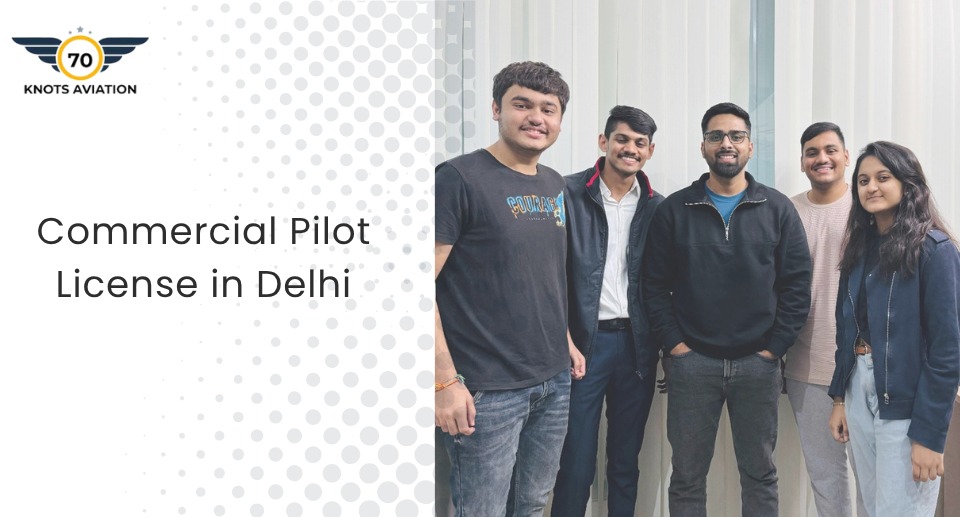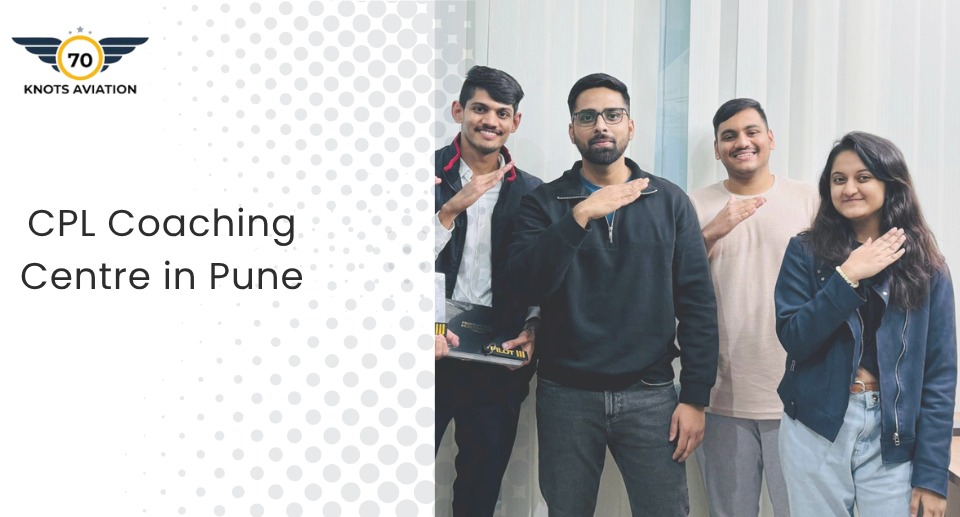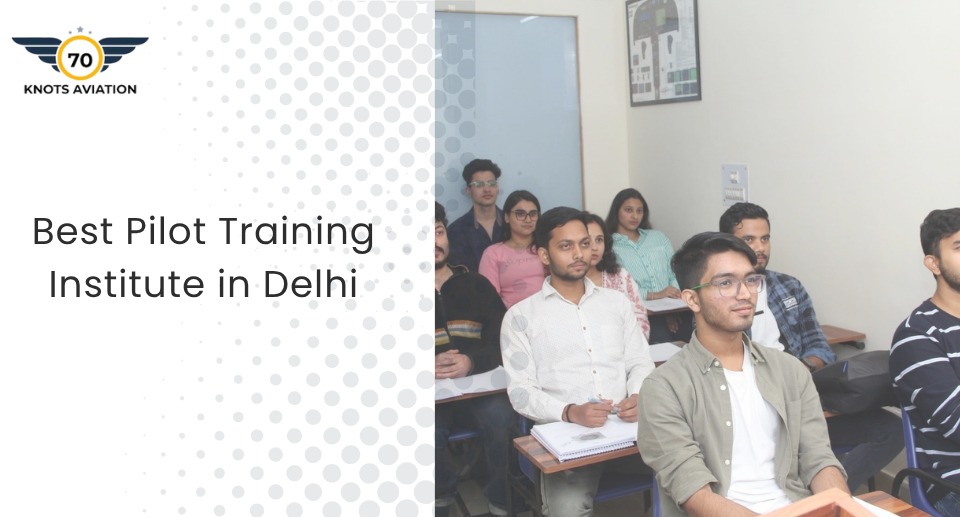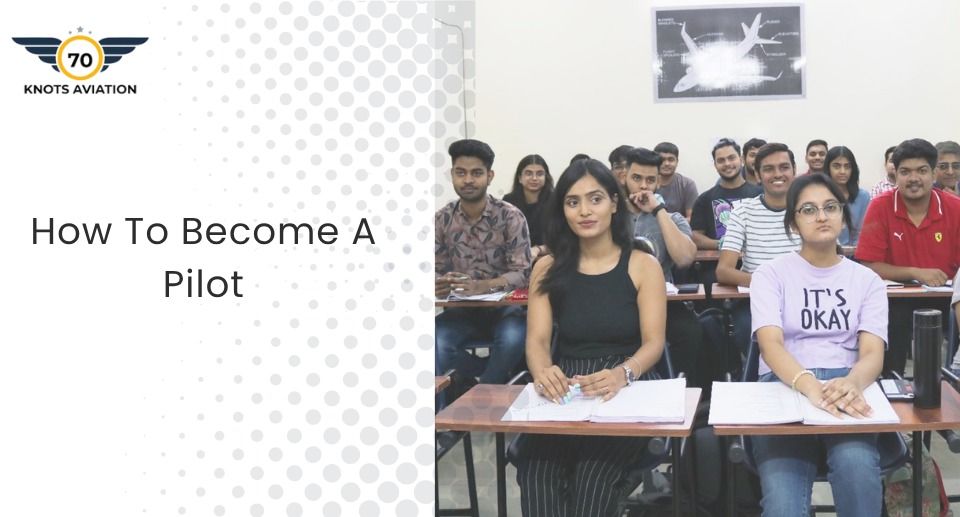Commercial Pilot License in Delhi: Build a Sky High Career with 70 Knots Aviation

The world of flying is changing fast. More people are traveling, airlines are buying new planes, and tech is getting smarter. Because of that, the chance to become a pilot looks like a good one. Getting a Commercial Pilot License in Delhi, especially with the DGCA‑approved program from 70 Knots Aviation, may be a smart step toward a job that works in many countries. Below is a look at what you need, why Delhi is useful, and why the market pushes this choice in 2025 and after.
What Is a Commercial Pilot License (CPL)?
A Commercial Pilot License (CPL) lets you fly an aircraft for pay. It isn’t the same as a private licence that only lets you fly for fun. The CPL mixes a lot of school‑work – navigation, weather, rules, how a plane works – with real flying time. You need at least 200 hours in the air, including night flights, flying using instruments, and solo practice. The DGCA (Directorate General of Civil Aviation) controls the licence in India. It sets tough health and school rules to be sure pilots can decide fast and stay safe when they earn money from flying.
Why Choose Delhi for CPL Training?
Delhi isn’t just a city on a map. It is a whole support system for learning to fly.
- Central Spot – Sitting in the middle of India’s traffic sky, Delhi lets students practise in busy airspace, see many weather types and learn to talk to control towers. That speeds up learning how to see what’s happening around the plane.
- Teachers with Real Experience – The city pulls in flight teachers and engineers who have worked for airlines, charters, and the DGCA. They can turn hard ideas into clear steps.
- Good Buildings and Gear – Modern simulators, well‑kept training planes, and tidy classrooms are all here. That makes safety‑first teaching possible.
All together, Delhi works like a launch pad for anyone who wants to ride the growth wave of Indian and world aviation.
Step‑by‑Step Guide: How to Get a Commercial Pilot License in Delhi
- Eligibility and Sign‑Up
- Age – You must be 18 or older the day of the first flight test.
- School – Finish 10 + 2 with Physics and Math. Usually you need about 50 % in those papers.
- Medical – Get a DGCA Class 1 Medical from an approved doctor. This shows you are fit for high altitude and stressful situations.
- DGCA Ground Classes
Classes match the DGCA Part‑66 rules. Topics include:- Navigation – Planning routes, reading maps, finding the best way.
- Rules – Indian flying laws, ICAO standards.
- Weather – How clouds, wind and temp affect a flight.
- Plane Knowledge – Engines, controls, performance numbers.
- Performance & Planning – Weighing the plane, fuel calculations, load sheets.
- Radio Talk – Using the right words with towers, emergency signals.
- Flight Training and Hours
You must log at least 200 flight hours spread over:- Take‑offs & Landings – Normal, cross‑wind, short runways.
- Instrument Work – Flying by instruments, not by sight.
- Night Flights – Take‑offs, approaches, emergencies after dark.
Solo flights – Running the plane alone to boost decision‑making.
Emergency drills – Engine stops, system failures, forced landings.
Talking to ATC – Real‑time radio practice.
- DGCA Exams
Tests split into:- Theory – Written papers with multiple choice and short answers.
- Practical – A flight test by a DGCA‑approved examiner, watching manoeuvres, emergencies, and standard procedures.
70 Knots Aviation gives mock exams, personal mentors and feedback to strengthen confidence.
- CPL Issue and Application
After passing, you send a full packet to the DGCA: health paper, logbook sign‑off, and fees. The DGCA then gives the Commercial Pilot License, which legally opens doors to many jobs – airline first‑officer, corporate jet, cargo, instructor, or even government flying.
Why Train with 70 Knots Aviation?
- Course Follows DGCA Rules – The syllabus mirrors the newest DGCA changes, so you won’t need extra catch‑up classes.
- Teachers With Real Hours – Instructors hold more than 5,000‑hour experience in multi‑engine and jet planes. They share story‑based tips beyond textbooks.
- Career Guide – A team plans each student’s path, matches you with airline hiring dates, and practices interviews.
- World Connections – Partnerships with foreign schools and airlines let you train abroad for a short time, boosting your resume worldwide.
- Job Help – Regular job fairs, direct contact with airline HR, and alumni networks keep a clear road from licence to paycheck.
These points blend to turn a classroom student into a cockpit-ready pilot.
For the past ten years, 70 Knots Aviation has been dedicated to shaping the dreams of aspiring pilots into reality. Over this decade, the institute has proudly trained and guided many students who are now flying with some of India’s leading airlines. Known for its experienced instructors, practical training methods, and personalized approach, 70 Knots Aviation focuses on building both skill and confidence in every student. The academy’s commitment to maintaining high training standards and industry relevance has earned it a strong reputation among pilot aspirants. As it completes a decade in aviation training, 70 Knots Aviation continues to inspire future pilots to aim higher and fly with purpose.
Course Time and Money
- How long? – Usually 18–24 months, though weather, personal pace and other schedules can stretch it.
- Money parts:
- Class fees – Covers all theory lessons.
- Simulator use – Full‑motion practice for procedures and emergencies.
- Flight costs – Fuel, aircraft rent, instructor fees.
Medical & Exam – Help getting the Class 1 health paper and DGCA test fees.
Books – Texts and online material.
Uniform – Standard aviator clothes.
Clear fee lists let students plan budgets. Scholarships and pay‑over‑time plans can lower the money barrier.
Jobs After You Get a CPL
A CPL opens many doors:
- First Officer – Fly for a scheduled airline, later work up to captain.
- Corporate/Private Jet – Fly wealthy clients, plan custom trips, keep a low profile.
- Cargo Pilot – Move goods across the country or around the world.
- Flight Instructor – Teach future pilots while adding own hours.
- Government Pilot – Work for state agencies, doing surveys, patrols, rescue missions.
- Path to Captain (ATPL) – The CPL is the first step toward an Airline Transport Pilot License, the top licence for commanding jets.
This variety lets each graduate shape a career that matches personal goals and market need.
Why Becoming a Pilot Is Smart in 2025
- India’s plane traffic is booming – Studies forecast more than 9 % annual passenger rise until 2030, helped by higher incomes, a bigger middle class, and plans like UDAN (Ude Desh ka Aam Naagrik).
- More planes, more airlines – Companies add over 300 new aircraft each year and new low‑cost carriers keep popping up, all needing CPL‑holders.
- Delhi edge – Airlines often favor those trained in Delhi because they already know Indian skies and rules. A licence from Delhi is also respected worldwide, opening up jobs abroad.
All this makes pilot training not just a job choice, but a solid investment in a stable, advancing career.
The Whole Learning Experience at 70 Knots Aviation
Beyond core lessons the school adds extra layers:
- Soft‑skill work – Leadership, teamwork, and keeping calm in the cockpit.
- Airline prep – Mock line‑checks, crew‑resource‑management drills, and SOP practice.
- Simulator time – Regular sessions on high‑fidelity models for many aircraft types.
- Guest talks – Visits from senior captains, air traffic controllers, safety experts.
- Feedback – After each flight or class, a debrief clears up what worked and what needs fixing.
This mix builds not just flying skill but the attitude airlines want.
How to Start Your CPL Journey in Delhi
- Visit the site – Go to the official 70 Knots Aviation web page. Look at course info, teacher bios, and past student stories.
- Book a chat – Arrange a one‑on‑one talk with an admission counselor. Discuss eligibility, money plans, and timing.
- Get the health paper – Set an appointment with a DGCA‑approved medical centre for the Class 1 check.
- Enroll in ground school – Fill the form, upload school marks, pay the first fee.
- Begin training – Start theory classes, then move into flight lessons as the schedule says.
Following these steps moves you from curiosity to the cockpit with as few bumps as possible.
Final Thoughts
Moving from dreaming about clouds to holding a Commercial Pilot License shows dedication, discipline and a good plan. Delhi offers top‑notch facilities, seasoned teachers and an active aviation world that few places can match. 70 Knots Aviation, with its rule‑following syllabus, expert staff and full career support, is ready to guide committed people toward the top of their aviation hopes.
Take the first step now – contact 70 Knots Aviation, start the clear training route, and chart a high‑altitude career that gives personal joy and helps shape the future of global flight.



